Politics
‘0 to 1939 in 3 seconds’: Why Anti-Elon Musk Satire Is Flourishing in Britain

The mischievous posters began appearing all over London in the past two months.
On the side of an East London bus stop, one of them shows Elon Musk, the world’s richest man, emerging from a Tesla’s roof with his hand pointing upward in a straight-armed salute. “Goes from 0 to 1939 in 3 seconds,” the ad reads. “Tesla. The Swasticar.”
Another mock ad shows Mr. Musk and President Trump in front of a red Tesla with the words: “Now With White Power Steering.” In North London, a fake movie billboard blares: “The Fast and the Führer,” with a picture of Mr. Musk saluting beside a Tesla with a DOGE license plate, a reference to the budget-slashing federal agency he currently leads on behalf of Mr. Trump.
“Parental Guidance,” warns the billboard, put up by a group calling itself Overthrow Musk. “Tesla’s CEO is a far-right activist. Don’t give him your money.”
Across the British capital and in several European cities, Mr. Musk’s signature business has become the target of the same kind of political anger that has fueled vandalism of Tesla cars in the United States and sometimes violent protests at his dealerships.
There have been some instances of unruly protests and vandalism in Europe. But much of the anti-Musk sentiment has taken the form of political satire, of the kind that has flourished in Britain since at least the 18th century.
Just outside Berlin, a group called the Center for Political Beauty used high-power lights to project the word “Heil” onto the side of a Tesla factory so that it read “Heil Tesla,” along with a picture of Mr. Musk saluting during a speech in Washington. In Italy, street art depicts Elon Musk taking off a mask to show Adolf Hitler’s face underneath. The words “Elon Mask” appear above the picture.
“There’s never been a target exactly like this,” said John Gorenfeld, a software engineer who helped start a London-based group called “Takedown Tesla.” The group has organized protests of several dozen people for the past several weeks. They hold posters along freeways that say “Honk if you hate Elon.” And they have printed bumper stickers for Tesla owners with phrases like “Don’t make the same mistake” and “Pre-2020 Model.”
“Nobody who is that rich and powerful has behaved that outrageously,” Mr. Gorenfeld said. “There’s something campy and ridiculous about Musk’s brand of toxicity. And it opens up a real space to ridicule.”
In Europe, Mr. Musk is not just a faraway example of American wealth and power. Over the last year, he has become a frequent political meddler, often weighing in on behalf of far-right causes on X, his social media platform, where he has 218 million followers.
In Britain, Mr. Musk is known for sharing misinformation about a child rape scandal and calling for Prime Minister Keir Starmer to be jailed. He has called for the release of Tommy Robinson, a far-right, anti-immigrant agitator who is in prison for contempt of court. And he criticized the seven-year sentence of a neo-Nazi who incited and took part in anti-immigrant riots last summer.
The small anti-Musk groups that have popped up around Europe have the same basic goal: Tank Tesla’s stock price and sales as a way of sending a message to Mr. Musk and other super-wealthy people who are thinking of promoting far-right politics around the world. Some groups declined to be interviewed about their actions, citing concern about becoming a target of Mr. Musk’s ire on social media. But others were more open about their aims.
“The point of this is to show Musk and other billionaires that they are vulnerable and can’t act with impunity,” said Ben Stewart, a founder of a British satirical activist group called Led by Donkeys, which worked with the Center for Political Beauty to project Mr. Musk’s image on the Berlin factory. “We have to harness global public opinion to push back.”
Organizers think it’s working. Tesla’s stock price has almost halved since its high in December, around the same time that Mr. Musk began his high-profile role overseeing the firing of government workers and slashing federal agency budgets. This week, Tesla reported a 13 percent drop in sales compared with a year ago.
“What they’re trying to do is put massive pressure on me, and Tesla I guess, to you know, I don’t know, stop doing this,” Mr. Musk said last week in Wisconsin where he was campaigning for a state supreme court candidate.
And yet, he added with a shrug, “Long term, I think Tesla stock’s going to do fine, so maybe it’s a buying opportunity.”
The protesters who spoke about their aims said they wanted to challenge Mr. Musk’s influence without resorting to the vandalism that the billionaire has called out in the United States as “coordinated violence against a peaceful company.”
Theodora Sutcliffe, a London resident who helped organize Tesla Takedown, said none of the people she works with are participating in violence. Instead, they have sought to find other ways to capture public attention.
At one of their protests, a wavy, 20-foot balloon man who vaguely resembled Mr. Musk saluted into the air. At other times, Ms. Sutcliffe and her fellow protesters have left fliers on the windshields of Tesla cars.
“Once upon a time, Teslas were cool,” one flier says. “Now, sadly, that’s not the case. Driving a Tesla and using Tesla chargers means you’re propping up Elon Musk, a man who promotes climate deniers and fossil-fuel junkies.”
“If you want to go viral in the U.K., you have to be smart, I think,” Ms. Sutcliffe said. “That’s our sense of humor normally.”
The anti-Musk efforts in Berlin were led by Philipp Ruch, the artistic director for the Center for Political Beauty, a German activist group. In an interview, he said that much of the anger at Mr. Musk in Germany stems from the billionaire’s support for the country’s far-right party, the Alternative for Germany.
“The first day that the administration comes in, he does the Hitler salute,” Mr. Ruch said. “This is something we couldn’t tolerate, politically and artistically.”
Mr. Ruch performs many of his protests by “overwriting” one image with another. At the Tesla dealership, he used lights to superimpose his words and images of Mr. Musk to create a new artistic creation. (He said the police are now investigating his efforts, which were visible for about an hour.) Pictures of the building were spread widely on social media.
Other efforts have gone viral, too.
There are mock car air fresheners called “Musk-B-Gone” that promise to cover “the stench of fascism.” And cardboard cutouts of Mr. Musk and Mr. Trump, thanking Tesla owners for their support when they top up their cars at the company’s supercharger lots.
“There are some people who are coming at Musk as though he’s some sort of passive agent of Trump and that really, this is just another way of getting to Trump,” said Ms. Sutcliffe. “There’s other people who perceive Musk as somebody who’s a unique type of threat that we really haven’t seen before in terms of his economic control and control of the information space.”

Politics
Democrats keep Pennsylvania Supreme Court control after 3 justices win retention races
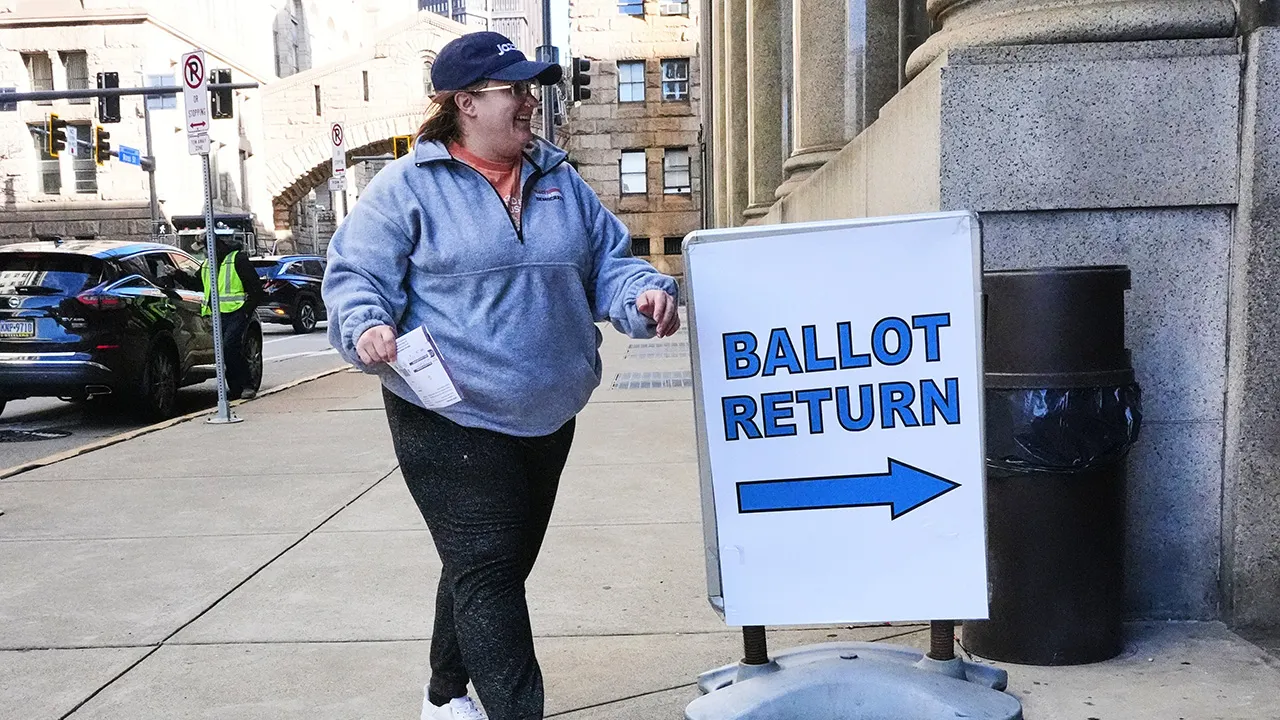
NEWYou can now listen to Fox News articles!
All three justices on the ballot in Pennsylvania will keep their jobs after winning races on Tuesday in an election that had threatened to change the state Supreme Court’s liberal composition.
Democrats will continue to hold a 5-2 majority on the state’s highest court, a result of voters overwhelmingly choosing to retain Democratic justices Christine Donohue, Kevin Dougherty and David Wecht. The Associated Press called the races at about 10 p.m. local time.
“Tonight, folks across our Commonwealth sent a resounding message by voting to retain all three Supreme Court Justices who will continue to defend the rule of law, safeguard our elections, and protect our constitutional rights,” Democratic Gov. Josh Shapiro said in a statement.
REPUBLICANS MOUNT CAMPAIGN TO FLIP PENNSYLVANIA SUPREME COURT’S DEMOCRATIC MAJORITY
Pennsylvania Supreme Court Justice Christine Donohue speaks at her swearing-in ceremony Jan. 8, 2016, in Pittsburgh. (Keith Srakocic/AP Photo)
The race attracted an unusual amount of attention as state and national groups poured what The Associated Press estimated to be more than $15 million into it, exceeding spending in past retention elections and underscoring the stakes of changing the court majority.
Pennsylvania Supreme Court justices serve 10-year terms and can be retained for consecutive terms until they reach the age of 75, at which point they must retire. Donohue, who is 72, will be unable to serve out another full term.
Republicans’ fight with the judiciary has intensified this year as judges have routinely thwarted President Donald Trump’s agenda. Their defeat in Pennsylvania, a battleground state that has seen high-stakes election litigation in recent years, comes after they suffered a bitter loss in an expensive Supreme Court race in another swing state, Wisconsin, in April.
5 KEY RACES TO WATCH ON ELECTION DAY 2025
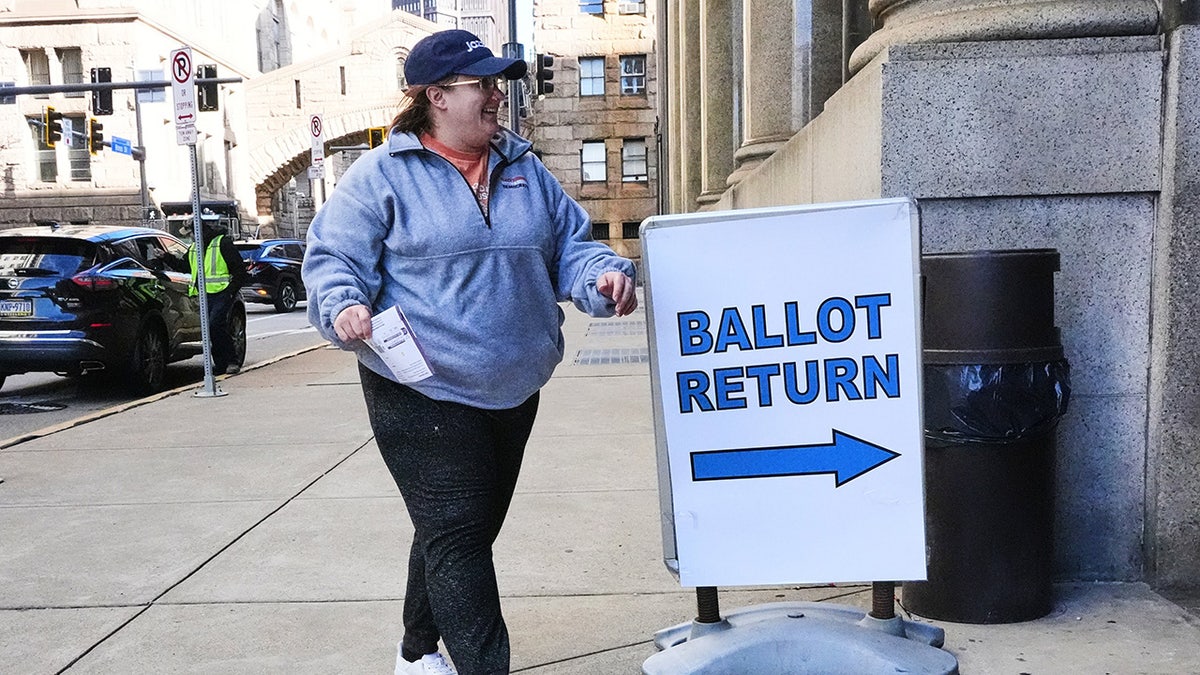
A voter drops off a mail-in ballot at the City-County Building in downtown Pittsburgh Tuesday, Nov. 4, 2025. (AP Photo/Gene J. Puskar)
Trump weighed in on the race this week, calling for the ouster of the three justices. Trump said they “ruled for Sleepy Joe Biden over and over, and interfered in the 2020 Election” and that it was “time for Justice.”
The odds had been stacked against the GOP in Pennsylvania since only one justice, Russell Nigro, had ever been voted out through a retention race. Nigro was defeated in 2005 amid public outrage over legislative and Supreme Court justice pay raises.

A voter uses a ballot drop box at the Bucks County Administration building voting on demand and ballot drop center in Doylestown, Pa., Oct. 31, 2024. (Ed Jones/AFP via Getty Images)
Republicans dedicated their spending and resources to attempting to persuade voters that ousting the justices would be a well-deserved referendum on the Supreme Court’s controversial decisions surrounding COVID-19 lockdowns and election rules. Democrats argued that a loss would threaten women’s access to abortion and reproductive health services.
The state’s highest court rejected Republicans’ attempt to toss out 2.5 million mail-in ballots in the 2020 election but delivered a mixture of smaller wins and losses to the GOP in the 2024 election over mail-in and provisional ballot lawsuits.
In 2020, the state Supreme Court also upheld Democratic Gov. Josh Shapiro’s order temporarily shutting down non-essential businesses in the state because of COVID-19.
Politics
Prop. 50 is on the ballot, but it’s all about Donald Trump

California voters went to the polls Tuesday to decide on a radical redistricting plan with national implications, but the campaign is shaping up to be a referendum on President Trump.
Proposition 50, a ballot measure about redrawing the state’s congressional districts, was crafted by Democrats in response to Trump urging Texas and other GOP-majority states to modify their congressional maps to favor Republicans, a move that was designed to maintain Republican control of the U.S. House of Representatives.
Opponents have said Proposition 50 is a power grab by Democrats that would blatantly disenfranchise Republican voters.
But supporters, fueled by a huge war chest in deep blue California, managed to make the vote about Trump and what they say are his efforts to erode democracy. The president has never been popular in California, but unprecedented months of immigration raids, tariffs and environmental rollbacks have only heightened the conflict.
“Trump is such a polarizing figure,” said Rick Hasen, a professor of law and political science at UCLA. “He commands great loyalty from one group of people and great animosity from others. … It’s not surprising that this measure has been portrayed as sticking it to Donald Trump or [California Gov.] Gavin Newsom.”
A CNN exit poll of California voters found that about half said their vote on Prop. 50 was a way of opposing Trump.
Proposition 50 underscores how hyperpartisan California politics have become. A UC Berkeley poll last week conducted in conjunction with The Times found more than 9 out of 10 Democrats supported Proposition 50 and a similar proportion of Republicans opposed it.
California voters had been bombarded with television ads, mailers and social media posts for weeks about the high-stakes special election, so much so that only 2% of likely voters were undecided, according to the poll.
As if on cue, Trump weighed in on Proposition 50 on Tuesday morning just as voting was getting underway.
“The Unconstitutional Redistricting Vote in California is a GIANT SCAM in that the entire process, in particular the Voting itself, is RIGGED,” Trump said on Truth Social just minutes after polling stations opened across California.
The president provided no evidence for his allegations.
Newsom dismissed the president’s claims on X as “the ramblings of an old man that knows he’s about to LOSE.”
At a White House briefing Tuesday afternoon, White House Press Secretary Karoline Leavitt claimed, without providing examples, that California was receiving ballots in the name of undocumented immigrants who could not legally vote.
California’s top elections official, Secretary of State Shirley Weber, called Trump’s allegation “another baseless claim.”
“The bottom line is California elections have been validated by the courts,” Weber said in a statement. “California voters will not be deceived by someone who consistently makes desperate, unsubstantiated attempts to dissuade Americans from participating in our democracy.”
More than 6.3 million Californians — 28% of the state’s 23 million registered voters — had cast ballots as of Monday, according to a voting tracker run by Democratic redistricting expert Paul Mitchell. Ballots submitted by Democrats were outpacing votes by Republicans on Monday, though GOP voters were believed to be more likely to vote in person on election day.
Disabled Army veteran Micah Corpe, 50, had some choice words for Newsom outside a Twentynine Palms church that served as a polling place, calling the politician a “greasy used car salesman.”
Corpe, a Republican, described Proposition 50 as an effort by the governor to “do whatever he wants because he doesn’t like Trump.” At the same time, he said Texas’ decision to redraw its congressional districts was a necessity because of the influx of people moving there from California and other blue states.
“He fights [Trump] on everything,” Corpe said of Newsom. “Just give in a little to get a little. That’s all he’s got to do.”
Matt Lesenyie, an assistant professor of political science at Cal State Long Beach, said the seeds of Proposition 50 were sowed when it became clear that Republicans in Congress were not going to challenge Trump in an investigatory way or provide serious oversight.
“One of the benefits of our system is that there are checks designed in there and we haven’t exercised those checks in a good long time, so I think this is a Hail Mary for potentially doing that,” he said.
Bob Rowell, 72, said that in an ideal world Proposition 50 wouldn’t be necessary. But the Trump administration’s push to redraw lines in red states has created a “distinct danger of creating a never-ending Republican domination in Congress,” he said. So Rowell, a Green Party member, voted yes.
“I hope there’s some way to bring us back into balance,” he said.
Robert Hamilton, 35, an architectural drafter who lives in Twentynine Palms, sees Proposition 50 as a necessary step to push back on Trump’s policies, which he said are impinging on people’s rights. He’s proud of the role California is playing in this political moment.
“I think as a state we’re doing an excellent job of trying to push back against some of the more egregious oversteps of our liberties,” Hamilton said outside a church where he’d just cast his ballot in favor of the measure. “I do hope that if this measure is successful that other states will follow suit — not necessarily taking the same steps to redistrict but finding ways to at least hold the line while hopefully we get things sorted out.”
Times staff writers Seema Mehta and Katie King contributed to this report.
Politics
Over one month into government shutdown and no end in sight – but predictions run rampant
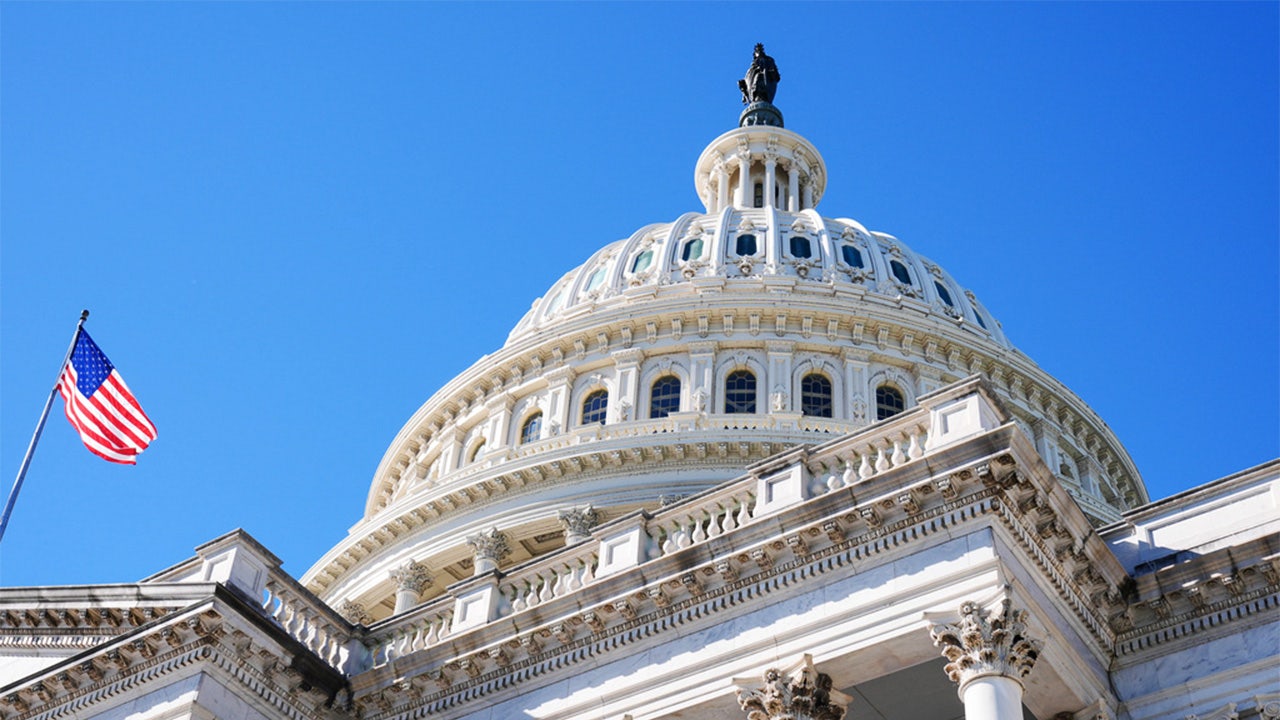
NEWYou can now listen to Fox News articles!
It is said that everyone’s a critic.
But when it comes to the government shutdown, everyone’s an oracle.
Especially when trying to determine when it might end.
“[Democrats] are waiting to elect [Zohran] Mamdani, the communist, soon-to-be mayor of New York. And then I believe things will go back into business as normal,” said Rep. Nancy Mace, R-S.C., on FOX Business. “If we don’t reopen this week, then I believe it’ll happen at some time shortly before Thanksgiving.”
GOVERNMENT SHUTDOWN KNOWLEDGE: GAMING OUT ITS POTENTIAL END
Sen. Shelley Moore Capito, R-W.Va., also offered her own prediction.
“I believe that this week could be the week,” said Capito on FOX Business.
But Sen. John Cornyn, R-Texas, wasn’t so sure.
“I don’t know what the predictions are based on,” said Cornyn on Fox. “We keep looking for some rational behavior on the part of the Democrats who shut down the government. But it was a dumb idea to start with. And it hasn’t gotten any better since.”
Everyone is now searching for a flicker of hope. A glimmer of reason as to why the government shutdown won’t deepen.
The Statue of Freedom atop the U.S. Capitol is seen on day 23 of the government shutdown, Thursday, Oct. 23, 2025, in Washington. (AP Photo/Mariam Zuhaib)
But all this week represents is another opportunity. There have been multiple inflection points along the way, but nothing has quite yielded the same opportunity to end the shutdown as this week.
Yes, emergency food aid for the nation’s neediest expired on Saturday. Air traffic is growing worse by the hour. Healthcare premiums formally spiked on Saturday – which is why Democrats balked at funding the government in the first place.
But none of those developments have truly forced the sides back to the negotiating table. That’s why some have settled on Tuesday’s elections as a potential turning point.
SHUTDOWN SEEN FROM THE PULPIT: INCHING ALONG ON A WING AND A PRAYER
Mamdani is the odds-on favorite to become the next mayor of New York City. Republicans are now projecting that the election is why the Democrats haven’t folded on government funding. They believe that certain election results – a win by the progressive Mamdani in New York coupled with what Republicans hope are losses by the moderate former Rep. Abigail Spanberger, D-Va., running for Virginia governor and Rep. Mikie Sherrill, D-N.J., running for New Jersey governor – will prod Democrats into action. Republicans believe such results will compel Democrats to see their party as out of touch.
“I hope the election tomorrow is a change. A sea change in all this,” said House Speaker Mike Johnson, R-La. “I hope that after everybody votes and they go in their room and they make the calculation that, well, ‘maybe, maybe we won’t have to hold that line anymore.’”
Republicans know the shutdown will end eventually. But if it ends soon, they want to shape the narrative that “Democrats caved because of the election results.”

House Speaker Mike Johnson, R-La., expressed hope that Tuesday’s elections will be “a change.” (Eric Lee/Bloomberg via Getty Images)
Consider that Republicans have been forecasting the shutdown’s end for five weeks now.
“The cracks started to appear in the Democrat base,” proclaimed Senate Majority Whip John Barrasso, R-Wyo., on October 1.
Republicans believed Democrats would cave in a matter of days once the shutdown started.
It never happened.
SENATE REPUBLICANS PLOT LONGER-TERM FUNDING BILL AS GOVERNMENT SHUTDOWN CONTINUES
The GOP then argued that Democrats were merely holding out until the “No Kings” rallies on October 19 concluded — that Democrats would have “shown they were fighting” by then.
“They won’t be able to reopen the government until after that rally,” forecast Johnson on Fox on October 10.
There was nothing of the sort.
Then the GOP amended its argument that Democrats were on the verge of giving in because federal workers were missing paychecks. Especially air traffic controllers.
“We’re getting to where the consequences of this are very real,” said Senate Majority Leader John Thune, R-S.D., on Fox on October 23.
That theory also fizzled.
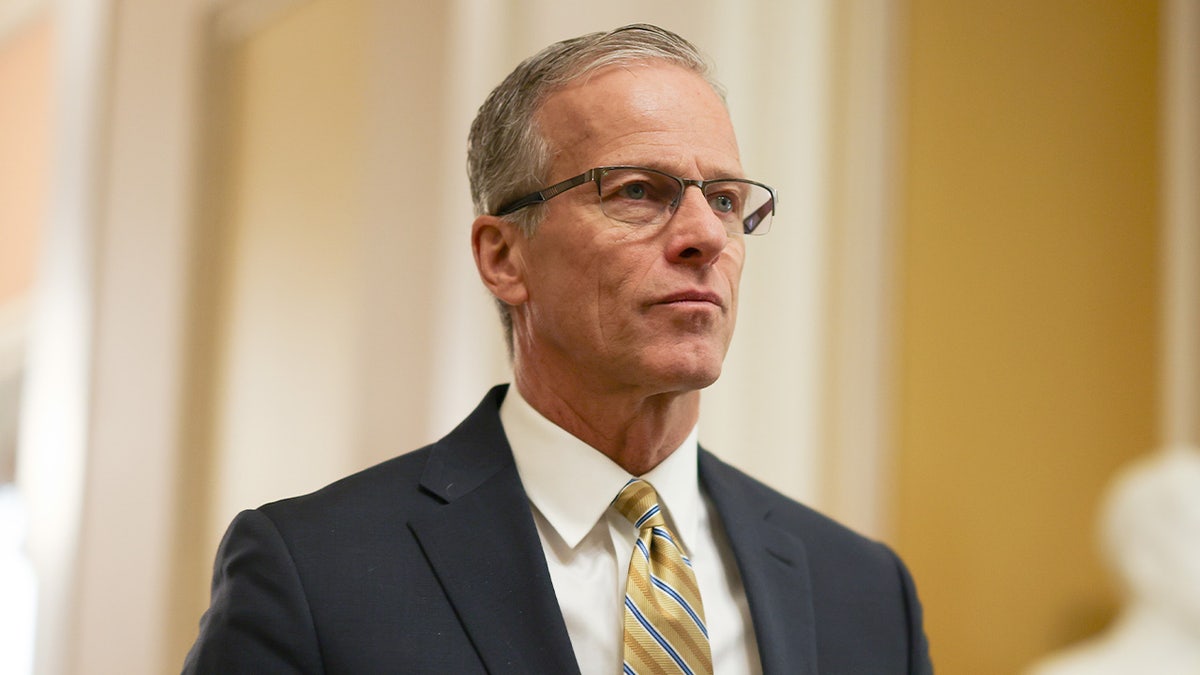
Senate Majority Leader John Thune, R-S.D., noted that “we’re getting to where the consequences of this are very real.” (Kayla Bartkowski/Getty Images)
Republicans then pinned their hopes on the next missed paycheck, coupled with flight delays, expiring SNAP benefits, and spiking health premiums on November 1.
“The Democrats will collapse entirely,” predicted Sen. Ted Cruz, R-Texas, on Fox over the weekend.
But nothing changed.
“We will not support a partisan, Republican spending bill that continues to gut the healthcare of the American people,” proclaimed House Minority Leader Hakeem Jeffries, D-N.Y. “That’s been our position. Week after week after week – and it will continue to be our position.”
Say what you will about the Democrats’ strategy. But they haven’t folded.
TRUMP’S ‘NUCLEAR’ DEMAND NOT LANDING FOR SENATE REPUBLICANS AMID SHUTDOWN
Keep in mind that Republicans have tried in vain to convince Senate Democrats since mid-September to accept a GOP spending plan which would only fund the government through November 21.
“It is now becoming close to a moot issue,” said Cornyn. “What are they going to do after, I don’t know.”
Thune proclaimed that the 21st is now a date which is “lost.”
Yours truly asked House Majority Leader Steve Scalise, R-La., what was the “drop-dead date” for Republicans to make another play call.
“With November 21st out there, it’s not a lot [of] time to resolve differences,” replied Scalise.
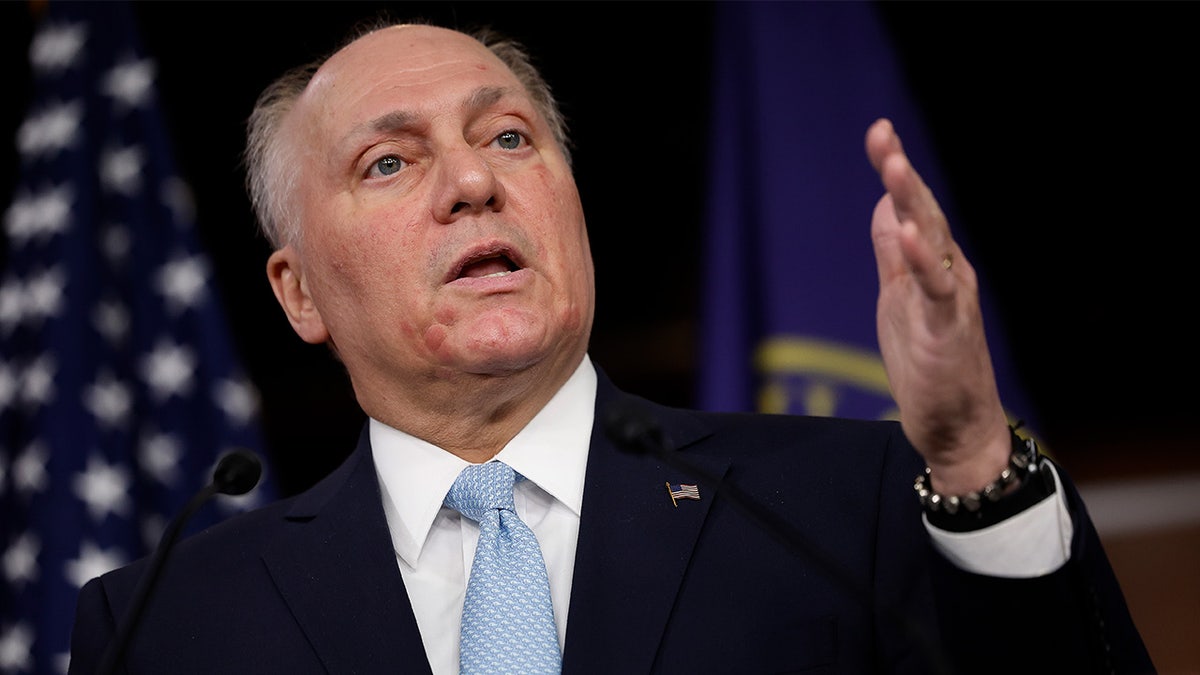
House Majority Leader Steve Scalise, R-La., was asked about the “drop-dead date” for another play call by his party. (Chip Somodevilla/Getty Images)
There’s now chatter about Republicans crafting another short-term spending bill through January.
“The longer sort of runway, the better,” said Thune. “I’m certainly listening to our colleagues and trying to figure out kind of where that landing spot would be.”
But there’s no guarantee either chamber could pass such a measure — especially if Democrats’ core demands remain unaddressed.
In his daily prayer to open the Senate session, Senate Chaplain Barry Black implied that the lawmakers needed help solving the crisis – simply because they were no closer to a resolution than they were in late September.
“Inspire our lawmakers to unite in putting out the fire of this government shutdown that has already burned far more than anticipated,” prayed Black.
It’s too unpredictable to make a sound prediction about when the shutdown will end. But if you predict enough things, you’ll eventually get something right.
CLICK HERE TO DOWNLOAD THE FOX NEWS APP
So how about this prediction:
The shutdown will end.
Eventually.
And that’s truly the only safe prediction anyone can make right now.
-

 Milwaukee, WI1 week ago
Milwaukee, WI1 week agoLongtime anchor Shannon Sims is leaving Milwaukee’s WTMJ-TV (Channel 4)
-

 News1 week ago
News1 week agoWith food stamps set to dry up Nov. 1, SNAP recipients say they fear what’s next
-

 Alabama1 week ago
Alabama1 week agoHow did former Alabama basketball star Mark Sears do in NBA debut with Milwaukee Bucks?
-

 Culture1 week ago
Culture1 week agoVideo: Tyler Mitchell Breaks Down Three Photos From His New Book
-

 News1 week ago
News1 week ago1 dead, 6 injured in shooting at Lincoln University homecoming festivities
-

 Austin, TX1 week ago
Austin, TX1 week agoDia De Los Muertos Austin: Parades, Altars & Events
-

 Culture6 days ago
Culture6 days agoVideo: Dissecting Three Stephen King Adaptations
-

 Seattle, WA3 days ago
Seattle, WA3 days agoESPN scoop adds another intriguing name to Seahawks chatter before NFL trade deadline















